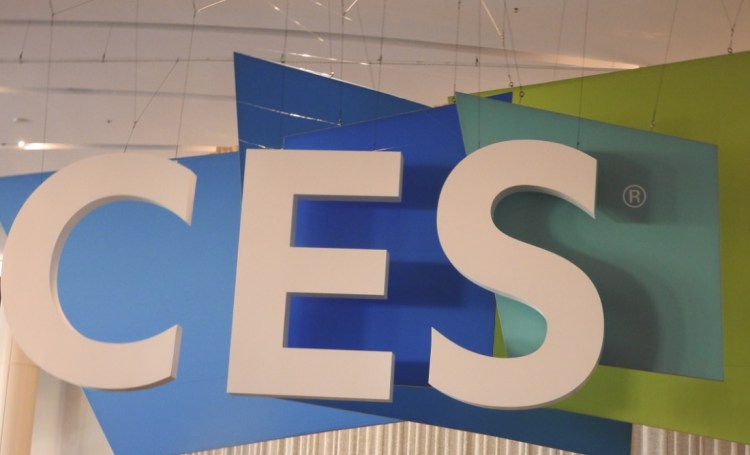For a week each January, Las Vegas becomes Las Betas. The VentureBeat crew checked out CES 2018, the big tech trade show last week, and we’ve come up with the top trends from the event. These trends are bigger than any single company, and they could change the landscape in the coming years.
We were among the 185,000 or so people who attended the show. We survived torrential rain on Tuesday and a 90-minute blackout in the big halls on Wednesday. We tried to cover as much of the 2.6 million square feet of space as we could. We toured the CES Unveiled, Pepcom, and Showstoppers parties to check out hundreds of exhibitors. We cruised through Eureka Park, where the startups were clustered, and listened to the keynote speeches and press events staged by the CEOs of Intel, Ford, Nvidia, and others. I personally walked more than 75,000 steps, or 35 miles, during the show.
CES is a jungle of competition, with each tech company jockeying to stand out. Many of them resorted to all the old tricks, like hiring attractive women to entice the geeky guys into booths. But the practice of featuring raunchy booth babes has given way to a more modern iteration. In the Sands Expo, for instance, the health and fitness companies have fit, spandex-covered models of both sexes showing off the latest fitness wearables. Many companies turned to celebrities and fancy dance shows. Brian Krzanich gave the opening keynote, the first 20 minutes of which featured dazzling light shows and musical entertainment. The thinking goes like this. We’re not geeks. We’re cool. We hang around cool people who are entertainers. You should love us too.
Sometimes we get mesmerized by the technology, but we always try to see it through different lenses. We try to see past these charades. And we realize it takes a while to bring technology to market. Shin Sakane, CEO of Seven Dreams Laboratories, has been working on his Laundroid laundry-folding machine for 12 years. He’s finally going to bring it to market this year — for $16,000. He probably has a few years to go before he has a real consumer product, but we admire his tenacity. And before we know it, some things we’ve waited for years to get, like wearable blood pressure monitors, finally arrive. Here are our observations about the trends of CES 2018. We hope you enjoy them.
June 5th: The AI Audit in NYC
Join us next week in NYC to engage with top executive leaders, delving into strategies for auditing AI models to ensure fairness, optimal performance, and ethical compliance across diverse organizations. Secure your attendance for this exclusive invite-only event.
The internet of useless, hackable, expensive, and stupid things is still alive
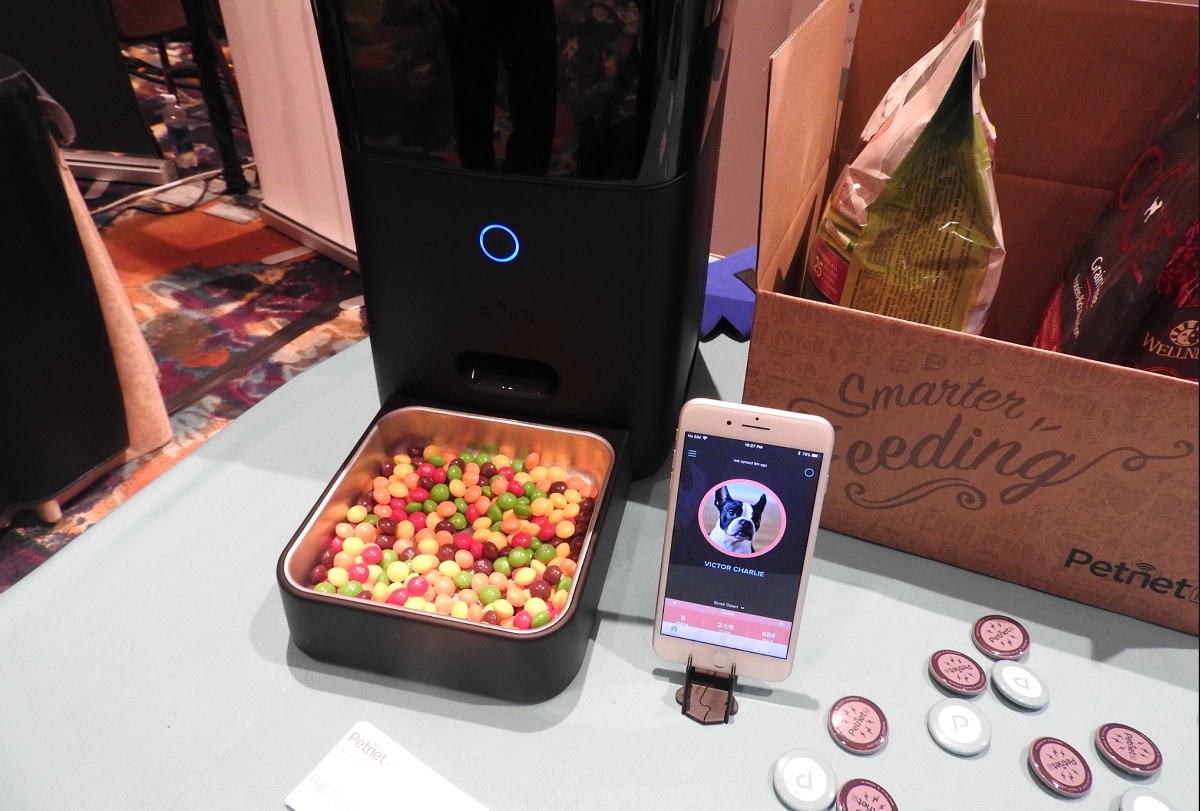
Above: In two years, Petnet’s Smart Feeder for pets has gone from $250 to $150, but it still costs a lot more than a $5 dog dish.
Petnet showed off its Smart Feeder for pets back in 2015. The device could feed your pet the right amount every time, even when you are away. It monitors your pets’ feeding habits. And it tells you when to reorder food. But back then, it cost $250, and it was attempting to replace dumb pet feeders that cost anywhere from $5 to $50. The company was back at the show this year with an improved version, but it still costs $150. This is what I call the internet of expensive things. We could use a smart pet feeder, but not for that price. It is good to see progress, but it is excruciating to wait for the costs of these devices to come down.
SoftBank CEO Masayoshi Son anticipates a future with 1 trillion internet of things (IoT) devices. But we’re going to have to wait until the smart things are as cheap as the dumb things they replace. I loved the idea of the autonomous suitcase that follows you around, until I heard it was $1,100. — Dean Takahashi
The show floor was too quiet
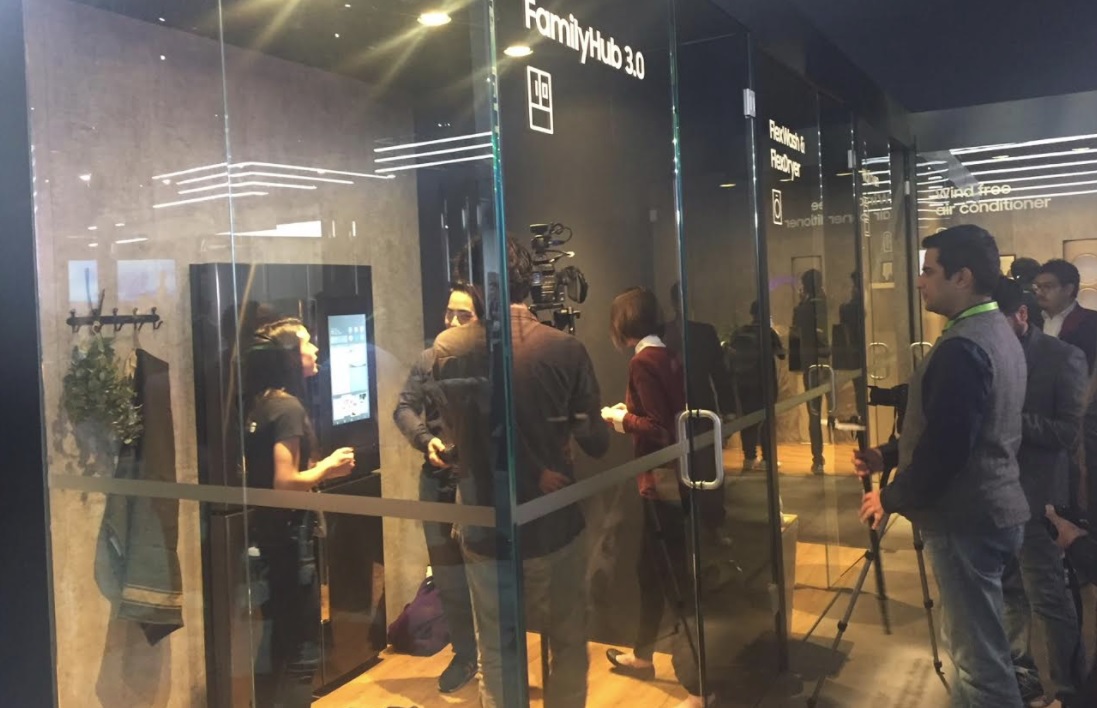
Above: The Samsung booth was quiet because the voice-driven appliances needed to be able to recognize sound commands.
When I went into the big booths at LG, Samsung, and Sony, I was struck by how quiet they were. It wasn’t the usual cacophony of sounds coming from all directions. In fact, many of the exhibits were behind closed glass doors. Attendees had to wait in line to get to the demos. That’s because many of the demos were voice-driven, with technologies such as Bixby, Alexa, and Google Assistant. They needed a quiet sound environment for the finicky voice-recognition software to work.
This became crystal clear at the LG press conference. David VanderWaal, vice president of marketing at LG, had to sweat it out on stage because the home assistant robot Cloi was uncooperative. At first, she said, “Hello Dave. I hope you are well. What can I do for you today?” She told him the daily schedule and noted that she had set the washer for his workout gear.
Then, after a couple of commands, she decided to stop answering his voice queries. While Cloi remained stubbornly silent, VanderWaal repeatedly asked questions on stage in front of hundreds of press. To no avail. Cloi simply looked at him with her unblinking blue eyes. “Even robots have bad days,” VanderWaal said.
Hopefully, your home isn’t too noisy for these goods. — Dean Takahashi
5G is stirring excitement
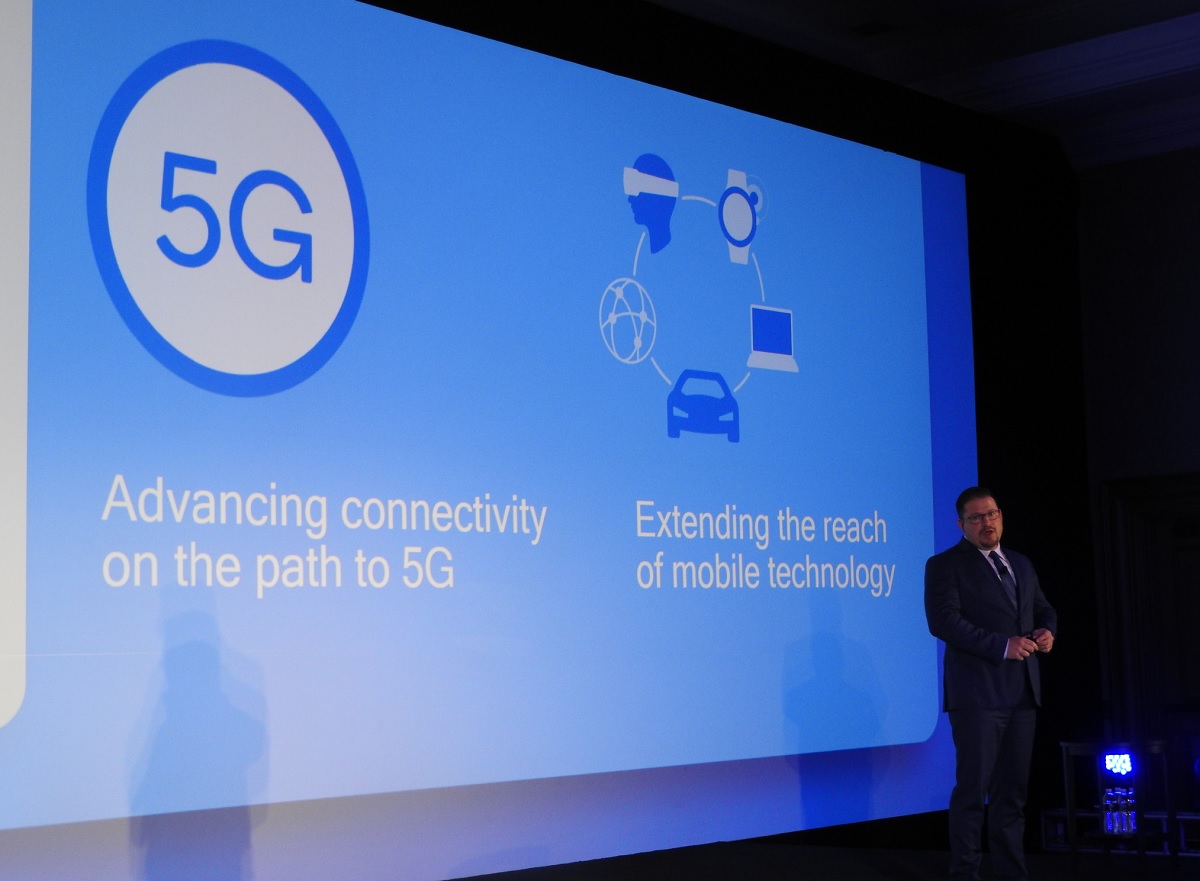
Above: Cristiano Amon, president of Qualcomm, talks about 5G at CES 2018.
Do you remember when 4G wireless first came out? It seemed so speedy, and the network wasn’t congested. Then everybody started watching Netflix while commuting, and the networks ground to a halt. We can experience the same thing all over again with the arrival of 5G, which will speed up your smartphone’s data connection by 10 to 100 times. It could be so fast that you might ditch the cable modem connection at home.
But it’s not here yet. While Intel, Qualcomm, and the big carriers talked a lot about 5G, they say that the networks won’t be deployed until 2019 or later. In February, Intel and others will stage a 5G demo for the Winter Olympics in South Korea. And in Japan, the Winter Olympics of 2020 are expected to be a seminal moment for 5G. 5G is an example of one of those slow-cooking technologies that will be here before we know it. Until then, we’ll just have to be patient. — Dean Takahashi
Autonomous vehicles still aren’t here, but they’re closer to reality

Above: Byton’s concept car has a 49-inch touchscreen.
Although Elon Musk’s self-imposed deadline to get autonomous vehicles on the road has come and gone, you couldn’t miss the buzz around autonomous cars at CES this year. At this point, it seems like an optimization problem: We know what the car needs to do, have a rough sense of how to create AI systems to do it, and just need to get the hardware and software to a point that it’s safe and reliable.
That last piece is far from easy, but all of the car folks I spoke with seem to think it will be within our grasp in the next few years. Nvidia CEO Jensen Huang told a group of reporters that he thought we’d see robot taxis on the road in 2019, followed by the release of increasingly automated vehicles in the years after that. — Blair Hanley Frank
Virtual assistant fragmentation is getting worse, not better

Above: LG Cloi robot refused to obey commands at CES 2018.
The promise of virtual assistants like Alexa, Siri, Cortana, and Google Assistant is that they can follow you throughout the day, providing you with the information you need and toiling away on your behalf. The problem is that having multiple virtual assistants doesn’t really work, since they all have different capabilities and third-party integrations. That’s a problem, since this CES was all about different manufacturers announcing privileged integrations with particular assistants.
Want a bathroom mirror with an assistant built in? Kohler’s only works with Alexa. (Its other smart bathroom fixtures integrate with a variety of assistants.) Meanwhile, Samsung’s TVs integrate with its underwhelming Bixby assistant. Oh, and Nvidia just announced software designed to make it easier for carmakers to create their own assistant for the autonomous vehicles they’ll have running around.
At least for the near future, if you’re looking for an easy way to stay within a single virtual assistant ecosystem, (except maybe Alexa) good luck. — Blair Hanley Frank
Virtual reality retreats while augmented reality rises
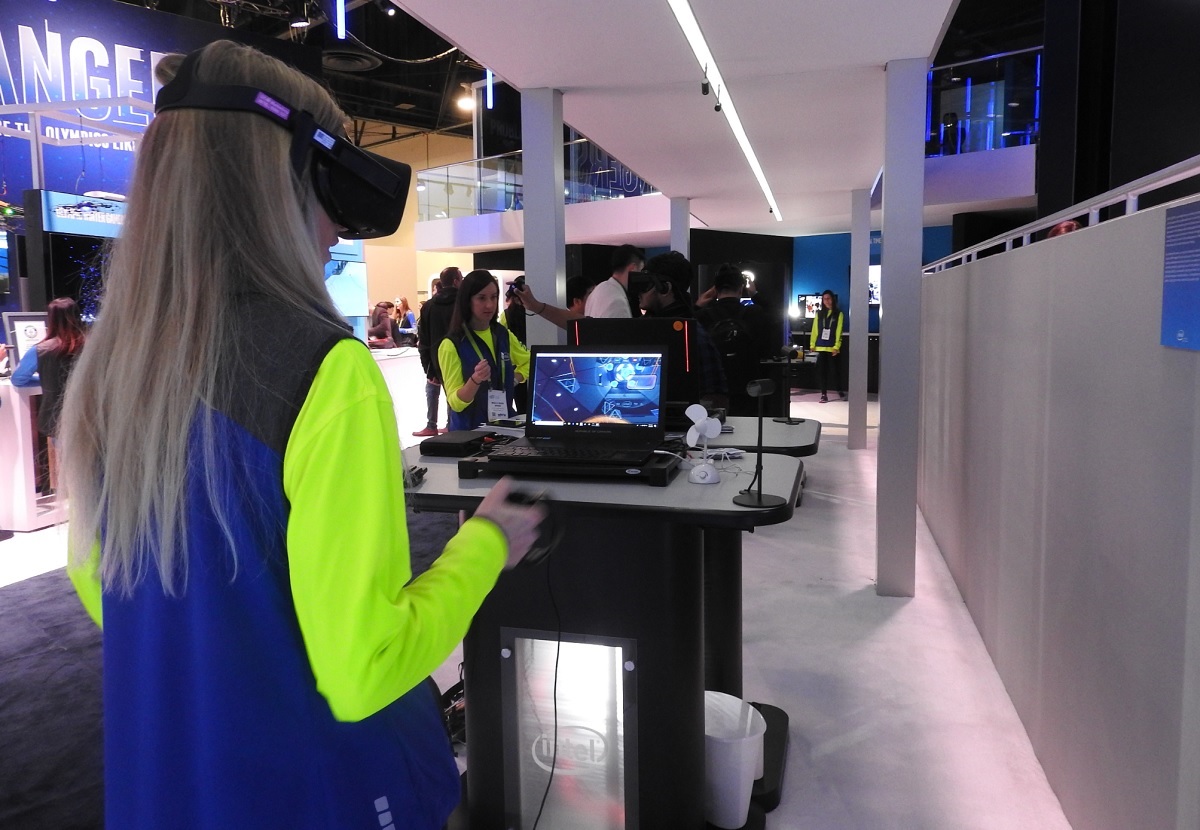
Above: VR demo at the Intel booth.
Virtual reality is suffering through a trough, the same way 3D glasses did. 3D glasses never made it out of that trough, but I think VR will. The problem with the first generation of headsets that debuted in 2016 was that they were expensive, they didn’t have great content, and they didn’t live up to their considerable hype. Intel continued to push VR heavily at its keynote event this year, highlighting Linden Lab’s Sansar VR experiences. But Facebook’s Oculus VR didn’t even show up with a booth, while HTC was holed up at an offsite hotel.
Gaming and virtual reality had 46 exhibitors, down 36 percent from 72 last year. These were laid out across 37,500 square feet, up 26 percent. Augmented reality had 24 exhibitors, up 20 percent, arrayed across 10,900 square feet, up 30.5 percent. AR has a small base, but it doesn’t have as steep a hill to climb as VR right now.
HTC’s Vive Pro has wireless technology and better screen resolution. That’s the right path for VR to move down, but it’s still going to be pretty expensive. I’m not sure when VR is going to take a turn for the better, but it’s probably going to be version 2.0 or 3.0 before consumers get excited about it, the content catches up, and the price comes down. What was the most interesting AR app I saw? Probably the “selfie with a porn star” app that Naughty America showed off. — Dean Takahashi
Major companies with truly big announcements aren’t making them at CES

Above: Tim Cook, CEO of Apple at WWDC 2017.
CES may position itself as a major trade show where people can see the latest innovations, but I’ve found it fairly consistently underwhelming in my three years of attendance (and watching it from afar, prior to that). At this point, the companies that can make major news outside of the show generally to do so. Sony’s keynote was the perfect example of this. CEO Kazuo Hirai showed off new products from the company that were, on the whole, poorly named iterations on items the Japanese tech giant already sells.
Ford made a bunch of non-announcements that served mostly as teasers for the company’s forthcoming strategic moves, promising additional details in the coming months. It seems like companies still feel they ought to make news at CES, but for the most part, they keep the most innovative stuff to themselves. Apple, of course, stays away from CES because it has its own events. And companies like Samsung wait for Mobile World Congress to show off their smartphones. By no means does CES have a monopoly on announcements. — Blair Hanley Frank
Non-tech companies are still making good use of tech
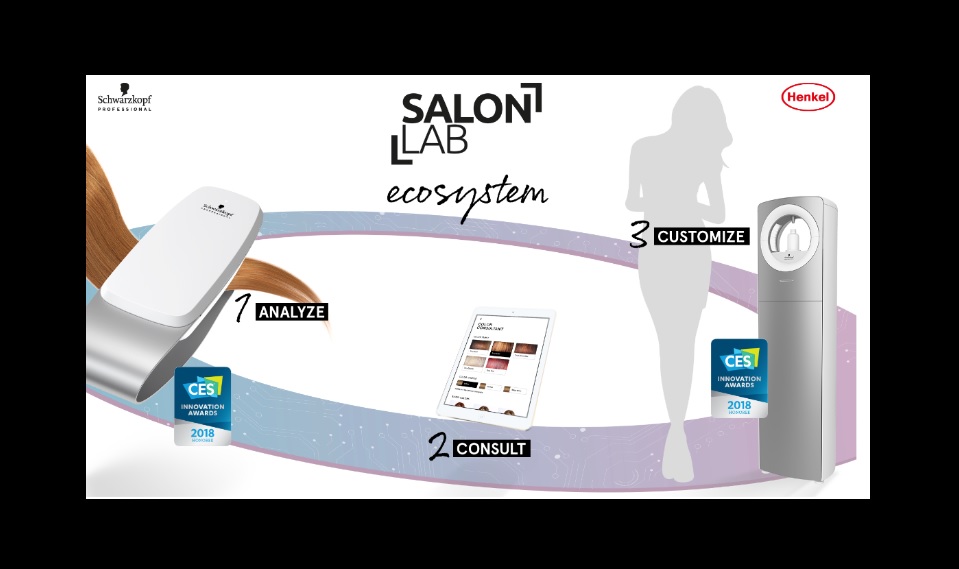
Above: Henkel’s Salon Lab ecosystem.
Sometimes the best tech products come from non-tech companies, much like Carnival cruise lines’ wearable for ocean cruises that appeared at last year’s CES. This year, Henkel Beauty Care SalonLab was a case it point. A 140-year-old German company, Henkel combined its expertise in beauty salon products, modern analytics, hair care consultancy, and custom manufacturing to create something that could transform the hair salon business.
Henkel created a scanner that beauty salons can use to analyze your hair’s molecular structure. Salons take measurements from the tip, root, and middle sections of the hair to gauge its overall health. They then get a quick product recommendation from Henkel’s Schwarzkopf Professional beauty consultants and can further tweak the formula.
Henkel’s SalonLab customizer creates a personalized shampoo on the spot and dispenses it just for you. You can come back a few weeks later to see if it’s working, which could lead to a tighter relationship between the salon and the customer. We saw similarly bright ideas from the likes of Whirlpool and Liberty Mutual Insurance. — Dean Takahashi
Innovation is still alive
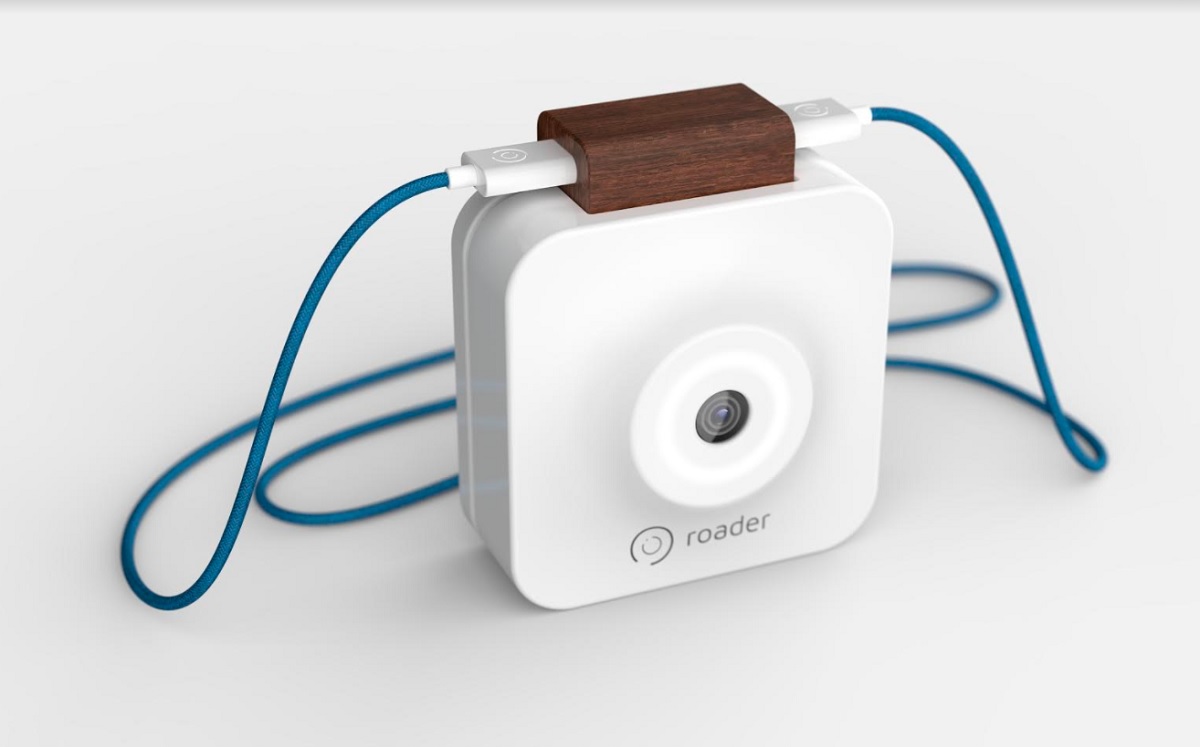
Above: Roader has built the Time Machine Camera.
While my colleague Blair was quite cranky about some of the pitches, I was impressed with a number of the innovations that mostly came from small companies. The Roader Time Machine Camera is a good example. It’s a camera that you hang around your neck. You can put it in ready mode, and it will record video, buffering the last 10 seconds in its memory. It can run for six or seven hours, recording but not saving video beyond the most recent 10 seconds. But when you hit the button, it will save that video — the last 10 seconds, as well as the next 10 seconds — in two threads. One is a small format thread which transfers in real time to your smartphone, where you can view it immediately. If you want the footage, you can download the full high-definition thread of the same video. And you can share it.
It’s like a time machine, allowing you to capture moments that would have otherwise been lost. GoPro should have invented this, but didn’t. It took a small team in the Netherlands to come up with the idea and bring it to CES. Here’s hoping they execute on it.
The Roader camera is just one example of this kind of smart thinking. I also liked the ideas behind smart translator Travis the Translator, the Omron HealthGuide wearable blood pressure monitor, the Dynamics Wallet Card (a credit card with a display, a cell phone connection, and a computer), and the SoundFi format for surround-sound headphones for smartphones. — Dean Takahashi
Sensors and data will be everywhere

Above: Vayyar can measure a variety of things with smart detection of radio waves.
Humans are not going to be done collecting data until we know every inch of the ocean floor and the ice caps and anywhere else we can sense things about the world. Vayyar has developed a radio sensor that can image a 3D space, capturing details such as a chest heaving back and forth. That enables it to detect who is breathing inside a house and to identify people by their patterns. If someone stops breathing, Vayyar can alert you. It can be used to show a 3D model of a cancerous growth in a woman’s breast. It can be used to detect the heartbeat of a baby sleeping in another room. Or it can be used to find studs or pipes that are hidden in a wall. It can see through materials, objects, and liquids. You could put it under a car and use it to detect whether everything is operating normally. This kind of sensor means that you can detect things like your fitness level without a wearable.
Tobii also has a way to detect your eye movements, making it much easier to follow through on your intentions. For instance, you can pick up an object in VR and toss it at something. You can perform that action much more accurately if sensors track exactly where your eyes are looking.
Interpreting the data that comes from these sensors is going to be a huge and important task, as Intel CEO Brian Krzanich said in his speech. Along the way, we’ll have to reconcile our need to measure everything against our need for privacy. — Dean Takahashi
